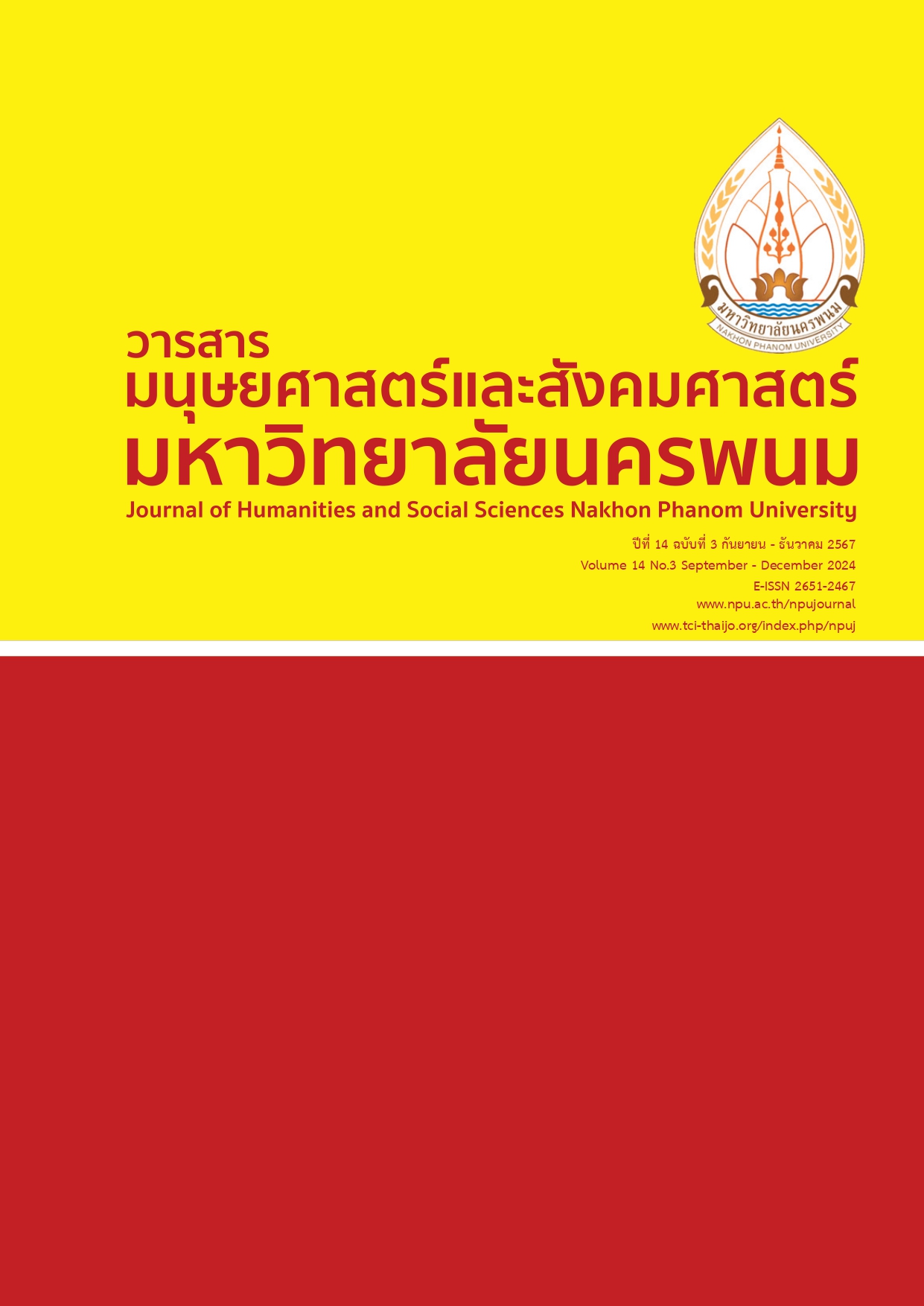The Linkage of Historical and Cultural Tourist Attractions and Thai-Vietnam Relationship
Main Article Content
Abstract
The purposes of this study were to investigate the contexts and create historical, memorial, cultural and Thailand-Vietnam relationship tourism routes in the area of Phichit Province, Udon Thani Province, and Nakhon Phanom Province. This qualitative study was carried out using anthropological, historical, memorial cultural, and tourism concepts. Data was collected from primary and secondary sources in Thai, Vietnamese, and English. Research instruments included a relationship analysis form and an in-depth interview form. The target group was selected using a purposive random sampling consisting of 24 key informants, including expertise in history, historic site management, culture, and the Thailand-Vietnam relationship in the aforementioned provinces. The result found that 1) the study of the 3 provinces' contexts found that there are historical, memorial, cultural, and Thailand-Vietnam relationship tourist attractions related to each other under the story of Ho Chi Minh's movement in Thailand. 2) The 3 historical, memorial, cultural, and Thailand-Vietnam relationship tourism routes were created between Phichit, Udon Thani, and Nakhon Phanom aimed to produce new and captivating tour packages for both Thai and foreign tourists consisting of 1. Following Ho Chi Minh's Footprints from the Chao Phraya River to the Mekong River Route, 2. Following Ho Chi Minh's Footprints from the Mekong River to the Chao Phraya Basin Routes, and 3. Following Ho Chi Minh's footprints in the Isaan Region Route.
Article Details

This work is licensed under a Creative Commons Attribution-NonCommercial-NoDerivatives 4.0 International License.
References
Akbaş, M. & Kelekci, Ö. (2021). From factory to museum: The obliteration of the history of resistance. In Adele Chynoweth (ed.). Museums and the Working Class. (111-123). New York : Routledge.
Binkhorst, E. (2006). The co–creation tourism experience. Retrieved March 2021, from http://www.esade. edu/cedit2006/pdfs2006/papers/esther_binkhorst_paper _esade_may_06.pdf.
Chuwaen, Y. (2019). Local history. Bangkok : Gypsy Group Company Limited.
Dickman, S. (1996). Tourism: An Introductory Text. Sydney : Hodder Education.
Goscha, C. E. (1999). Thailand and the Southeast Asian networks of the Vietnamese revolution, 1885-1954. London : Curzon.
Haripriya, S. (2020). Memory, Ethnography and the Method of Memory. Sociological Bulletin, 69(2),1-16.
Kasetsiri, C. (1997). Cultural tourism. Bangkok : Thailand Research Fund.
Khamwan, S. & Sangboonraung, W. (2021). Innovation to Connect Historical Tourism Sites,Culture and Relations Between Thailand, Laos and Vietnam with in the Central Mekong Context. Journal of Humanities and Social Sciences Nakhon Phanom University, 11(3),115-130.
Khamwan, S. & Sangboonraung, W. (2024). Ho Chi Minh Museum in Nakhon Phanom: The Creation of Memory Place between Thailand and Vietnam after the Cold War. Journal of Humanities and Social Sciences Nakhon Phanom University, 14(1),199-215.
Murashima, E. (2012). The early years of communism in Thailand (1930-1936). Bangkok : Matichon.
Nanthachak, A. (n.d.). Revealing the secret legend of Ho Chi Minh history at Ban Dong Phichit Province, Phichi : Phuphan Institute.
Nora, P. (1995). Realms of Memory : Rethinking the French Past. New York : Columbia University Press
Office of the National Economic and Social Development Council. (2020). National Economic and Social Development Plan No. 13 (2022-2027). Retrieved June 2023, From http://www.nesdb.go.th/nesdb _en/Main.php?filename=develop_issue.
Office of the National Economic and Social Development Council. (2022). 20-year national strategy (2018-2037). (2nd ed.). Bangkok : Office of the National
Phattiyathani, S. (2024). Educational Measurement. (14th ed.). Kalasin : Prasan Printing.
Richards, G., & Raymond, C. (2000). Creative tourism. ATLAS News, 23,16-20
Rojrungsat, P. (2010). Community tourism. Bangkok : Odeon Store.
Satyanurak, A. (2005). History for the community: a new direction for the study of history. Bangkok : Thailand Research Fund (TRF).
Scott, C. E. (1999). The time of memory. Albany, NY: State University of New York Press.
Sripana, T. & Thin, T. (2005). Viet Kieu in Thailand and Thai-Vietnamese Relationship. Bangkok : Institute of Asian Studies Chulalongkorn University.
Suwanwong, N. (2019). 125 years of Vietnamese people in Udon Thani. Udon Thani : Udon Thani Rajabhat University.
Thippimol, O. (2022). Museum of Betrayal of the Indonesian Communist Party]. In Thiamsoon Sirisrisak (ed). [Museums and Cultural Heritage]. (38-59). Bangkok : Thammasat University.
Thongchim, P., Sakunchannarong, N., Atimatmaitree, A., Ngamyingyuad, W., Suksang, S. & Amnuaykit, P. (2022). Tourism Pattern of the Historic Routes Retracing The King Rama IX develops a Sustainable Tourism in Songkhla. In the 13th National and International Academic Hat Yai Conference, Songkhla, Thailand (pp.2670-2681). Songkhla, Hat Yai University.
United Nation. (2000). Guidelines on integrated planning for sustainable tourism development. New York : United Nations Publication.
Watrasoke, S. (2016). Udon Thani and the Vietnam National Movement. Khon Kaen : Khon Kaen University.


